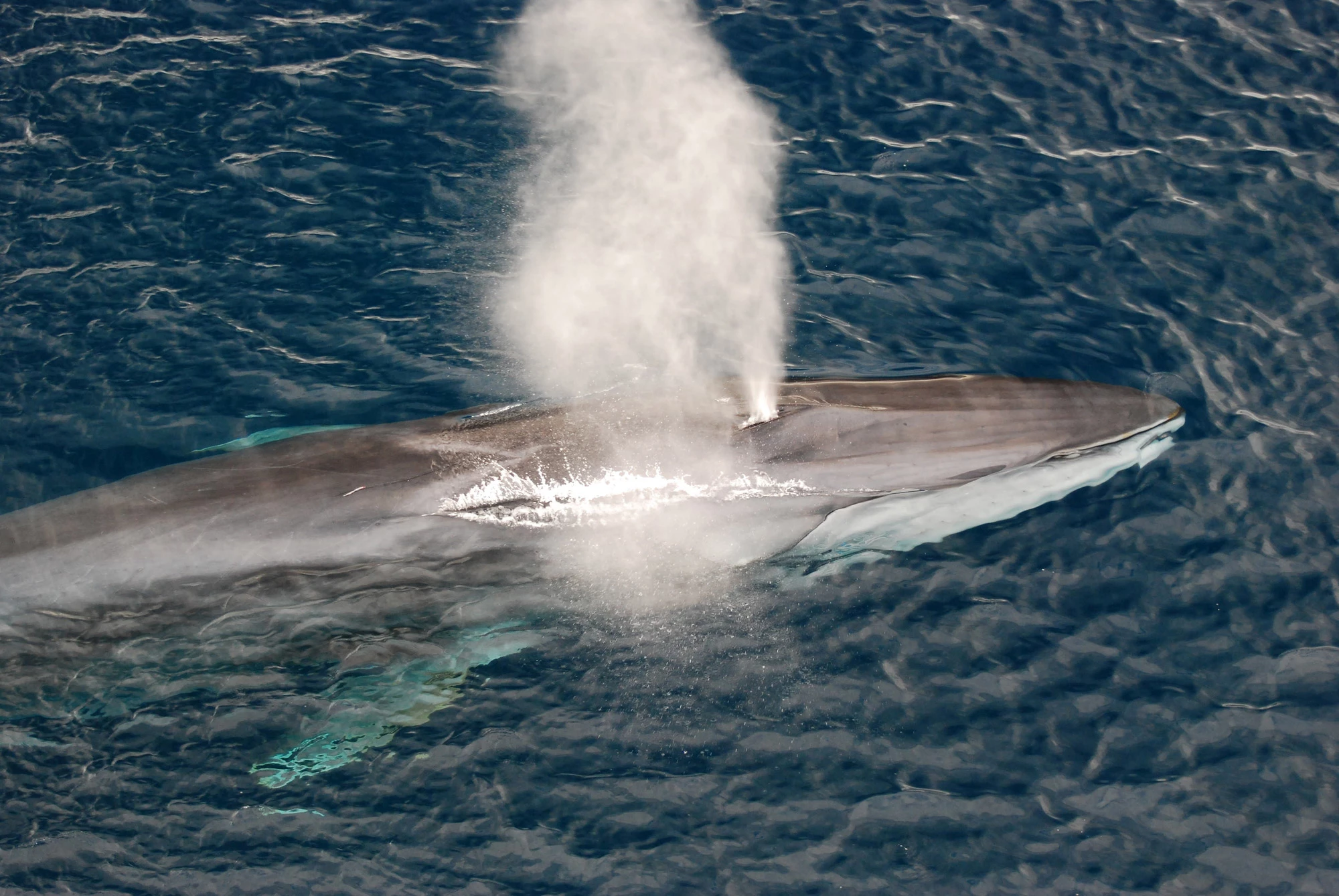Global warming has caused many large whales to move from warmer waters, increasing the risk of being struck by ships. Norwegian researchers have converted existing fiber-optic cables into hydrophones, enabling them to track Arctic fin whales in real time. The easy-to-adopt technique may reduce the incidence of ship strikes and help protect whales worldwide.
Climate change is occurring more quickly in the Arctic region than anywhere else, causing rapid change to marine ecosystems. The Svalbard archipelago, a Norwegian archipelago in the Arctic Ocean well north of the Arctic Circle, has been particularly affected by rising water temperatures.
For fin whales, the second largest mammal after the blue whale, rising temperatures, in combination with the significant decline in ice cover, has caused them to change their feeding behaviors, bringing them into closer contact with ships. Already endangered due to commercial whaling – there are estimated to be around 100,000 left in the world – the fin whale now faces a new danger.
For the first time, researchers from the Norwegian University of Science and Technology (NTNU) have used existing fiber-optic cables to track the movements of fin whales in real-time.
The first underwater cable was laid in the 1850s between Newfoundland and Ireland to transmit telegraph messages. These days, there are 550,000 miles (885,139 km) of submarine telecommunications cables crisscrossing our oceans and seas and transferring data between continents and islands.
For this study, the Norwegian researchers had access to two 155 miles (250 km) long fiber-optic cables that extend from Longyearbyen, the world’s most northernmost settlement and the largest inhabited area of Svalbard, to Ny-Ålesand, a research outpost located in the northwest.
They converted the cables into hydrophones, a device that detects and records ocean sounds, using distributed acoustic sensing (DAS). DAS is a technique that uses an instrument called an interrogator to send laser pulses down a fiber-optic cable and continuously records the returning pulses.
Using paired cables allowed the researchers to track the movements of eight fin whales in real-time over five hours by listening to their vocalizations. The whales were monitored in an area covering about 695 square miles (1,800 square km) and could be pinpointed to within about 328 ft (100 m).
“This work demonstrates how we were able to simultaneously locate and follow these whales over a 1,800 square km area – with relatively low infrastructure investment,” said Martin Landrø, a co-author of the study.
Recent research has predicted that the Arctic could be ice-free by 2035. As a result, the top of the globe is likely to see an increase in both commercial and cruise ship traffic. The increase in traffic in the Arctic region means there is an increased risk of ship strikes or whales being hit by ships.
The researchers are hopeful that their technique of using DAS to monitor whales will be used to prevent ship strikes in future, which would be a boon for whale conservation. All that’s needed is a fiber-optic cable and a whale.
“The capabilities demonstrated here establish the potential for a near-real-time whale tracking capability that could be applied anywhere in the world where there are whales and fiber-optic cables,” said the researchers. “Coupled with ship detection … a real-time collision avoidance system could be developed to reduce ship strikes.”
The study was published in the journal Frontiers in Marine Science.





